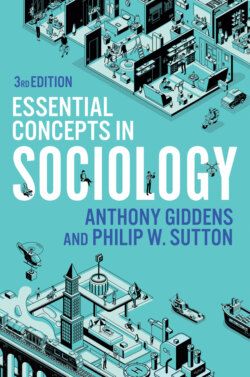Читать книгу Essential Concepts in Sociology - Anthony Giddens - Страница 7
Origins of the Concept
ОглавлениеTheories of a digital revolution are still contested, but the origins of digitization are well established. A crucial turning point was the creation of ARPANET, forerunner to the internet. ARPANET was an experimental computer network, a product of the US Pentagon’s Advanced Research Projects Agency Network, which enabled scientists across the USA to communicate directly. From here the network was expanded for use in universities, research centres and business (Athique 2013: 13). By 1987, 28,000 computers in universities and research facilities were linked, but by 1994 businesses had become the main users. As the internet became available in private homes, a global multimedia library, the worldwide web (WWW) became its central feature. The advent of fast broadband at the turn of the century then made available many more opportunities for development.
Significant technological advances in the digitization of data over this period transformed telecommunications. The processing power of computers continuously increased, as did internet speeds, making possible video streaming, faster downloads and interactive media such as blogs, vlogs and globally accessible social media (Negroponte 1995). Online sites, such as Wikipedia, are typical of the interactive second generation of internet usage, known as Web 2.0. Four major technological trends underpin ongoing digitization: the continuous improvement of computer capabilities, the digitization of data, satellite communications infrastructure, and fibre optics allowing multiple messages along a single cable. The digital revolution also includes a myriad of digital devices that are now part of everyday life, including computers, tablets, smartphones, internet-enabled TV and the expanding Internet of Things, all made possible by wireless technology (Wi-Fi). Today, artificial intelligence (AI), robotics and ‘big data’ mark out the next phase of development, as we move a step closer to a world of automated factories, driverless cars, drone delivery systems, domestic robots and AI-generated journalism and teaching.
